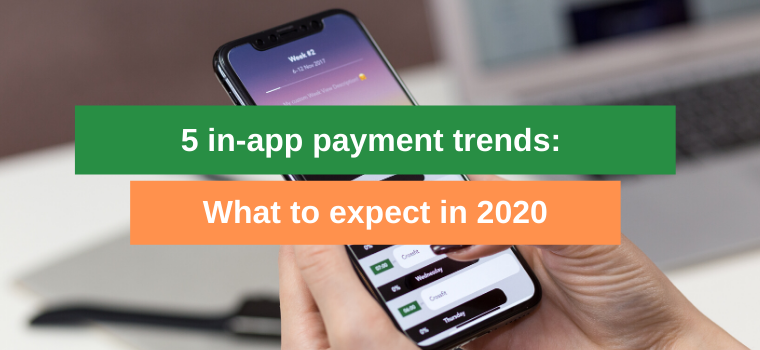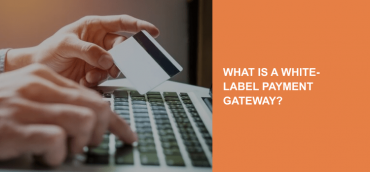In-app payments are gaining momentum now. No wonder, in-app payment trends enhance fastly. The recent study has shown that in 2017 people spent 37 billion USD on in-app purchases leaving app downloads profits amounting to 29 billion USD far behind.
And even though, only 5% of all smartphone users make in-app payments, and the average size of their purchase is 20 times higher than what app downloads bring in. Moreover, there will be 7 billion mobile users globally.
Now, that’s kind of math you like, right?
And we know what you’re thinking. With such a tendency, should you also consider implementing in-app payments?
That sounds smart. But before you set your mind to it, let’s see what in-app payment trends you should know in 2020.
Five in-app payment trends of 2020
1. Security.
Yes, the last couple of years are all about security. That’s why it’s #1 on our list of in-app payment trends.
With more and more merchants coming up with safer ways to process online payments via their sites or inside their apps, more sophisticated cyber criminals come into being. They know their ways around cybersecurity. They are always on the lookout for a way to break down the system. Fraud losses in 2018 were 19% higher compared to 2017.
And that is why security is the #1 in-app payment trend to mention. Security is at the heart of every business. Not one customer will want to make a purchase inside an app that doesn’t look safe or doesn’t comply with international security requirements.
As the customer chooses to make an in-app purchase, it eliminates leaving the checkout page and redirecting it to the hosted payment page. As there is no extra step, fraudsters have no space to act. One of the most popular ways of possessing personal data is redirecting the shopper to the copycat page. It might look exactly the same as the original payment page but will have slight differences in the URL. That’s why cyber crooks can trick online shoppers, steal the data and use it for illegal purchases in the future.
As customers notice suspicious actions or purchases from their payment cards, they tend to file for the chargebacks. That’s a merchant’s pain in the neck and the reason for extra spending.
That’s why, paying close attention to security measures is a way to an increased retention rate, customer loyalty, and, of course, the reason you started it all in the first place – the revenue. 
2. Speed.
Speed matters. The faster the transaction goes, the higher the chances for reduced cart abandonment are. For this reason, we call the load and transaction speed the second one among in-app payment trends.
Users are spoiled with the speed of their transactions. And you can’t blame them for it. We all live in an on-demand world. We’re not willing to wait an extra second when placing an order or making a purchase. 11% of shoppers left their shopping carts because the site was too slow. And like it or not, you have to take this into account in your business.
However, you can cut yourself some slack. Not everything here depends on you. You can implement the most advanced technologies to make in-app payments a seamless experience, but your bank might need more time to process the transaction.
They mean well. Instant in-app payments can coincide with the growing fraud and chargeback rates.
Yet, consider discussing instant in-app payments with your merchant account provider in case you don’t like the speed.
3. iOS vs. Android.
This is a never-ending battle. People have been arguing about their preferences for a long time now. And even though we won’t look into the differences between these OSs, there is one undeniable fact.
The Braze reports that “the average in-app payments size per user is $1.08 for iOS users and $0.43 for Android users.”
The number of Android users though often outnumbers those of iOS. Take this into account when considering various in-app payment trends.
This is what you have to bear in mind when implementing in-app payments. We’re not saying that having an Android app is a dead-end idea. But you have to know your odds from the start.
You might also like: 5 Trends for the Future of Payment Processing – Trends in Payments
4. Wearables.
Bring wearables into the picture too. Even though they come in third after smartphones and tablets in the in-app payments revenue rates, they still matter.
According to the study presented by the Optile, with the emergence of IoT (the Internet of Things), around 83% of people would like to use these technologies when shopping online. This includes in-app payments. Moreover, by 2020 wearable payments will reach $500 billion.
So, consider adding in-app payments to wearable devices. With them, you will be a few steps ahead of your competitors. But, of course, it depends on your type of business. Our advice is to keep an eye on such in-app payment trends but have your own business in perspective.
5. High-rated apps.
The truth is that apps that users rate high bring in better revenue via in-app payments. The reason for this is probably in trust. The higher and the more rates the app has, the higher the chances are that it is trustworthy and reliable. So, making a purchase inside of it is not scary. Once you realize the importance of this in-app payment trend, it can make a difference for you!
Sure thing high rates don’t come overnight. But this can stimulate you to improve your app for customers to rate it better. And here is why.
According to DigitalCommerce360, 2018 Cyber Week revealed 70% off in-app purchases. And an out-of-the-box fact was that those shoppers had never made in-app purchases before. But 33% of those Cyber shoppers bought something again during the holiday season.
Amazon, ASOS, and Aliexpress are among the most popular retail apps. So, you have an example to look up to. Also, sales volume during the holiday season is higher. Make sure to prepare the app for more traffic. In another way, technical difficulties may negatively influence your rate.

Conclusions
These are the in-app payment trends you can expect in 2020. In our next article, we will talk more about in-app payments’ pros and cons. You don’t want to miss that information. So, subscribe to our newsletter to stay tuned!





